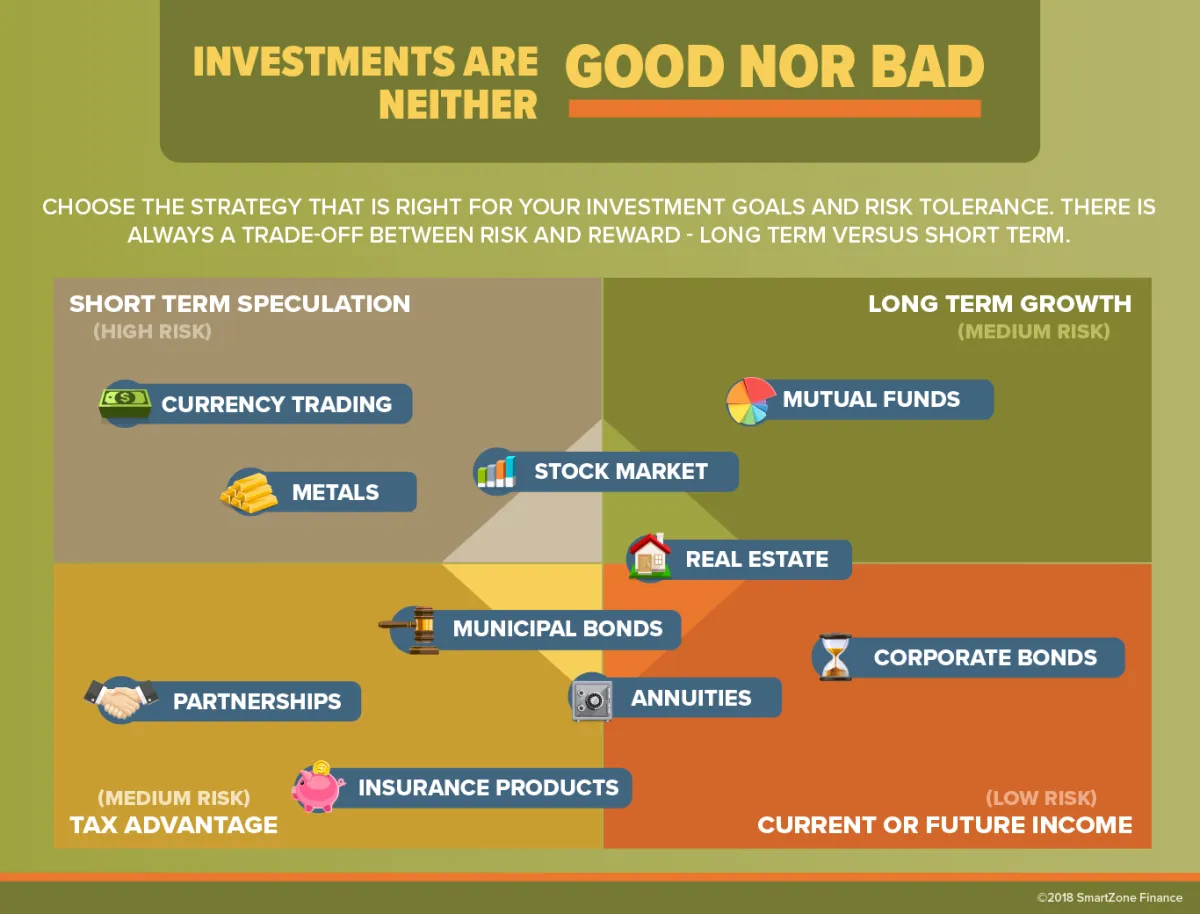Learn the essential strategies on how to build wealth through smart investing. From understanding risk management to unlocking the power of compound interest, this article will guide you towards financial success.
Understanding Wealth Building
Wealth building is the process of gradually accumulating assets and increasing your net worth over time. It’s not about getting rich quick schemes but rather a long-term strategy that requires patience, discipline, and smart financial decision-making.
Key principles of wealth building include:
- Spending less than you earn: This fundamental principle allows you to free up money to invest and grow your wealth.
- Saving consistently: Regularly setting aside a portion of your income, no matter how small, is crucial for building a solid financial foundation.
- Investing wisely: Putting your money to work in assets like stocks, bonds, or real estate can generate returns and outpace inflation.
- Managing debt strategically: While some debt can be helpful (like a mortgage), high-interest debt can sabotage your wealth-building efforts.
- Diversifying your investments: Spreading your money across different asset classes can help mitigate risk and maximize potential returns.
Setting Investment Goals

Before you even think about investing, you need to define your financial goals. What are you saving for? A down payment on a house? Your retirement? Your children’s education? Knowing why you’re investing will help determine how you should invest.
Here’s how to set effective investment goals:
- Be Specific: Instead of “saving for retirement,” aim for “accumulating $1 million by age 65.”
- Set a Timeframe: Establish deadlines for your goals (short-term, mid-term, long-term). This will influence your investment choices.
- Quantify Your Goals: Determine exactly how much money you’ll need to reach your objective.
- Make it Realistic: While it’s great to dream big, ensure your goals align with your income and risk tolerance.
- Write it Down: Documenting your goals makes them tangible and helps you stay focused.
Choosing the Right Investments
Building wealth through investing isn’t about taking wild gambles – it’s about making strategic decisions aligned with your financial goals and risk tolerance. Choosing the right investments is crucial to this process.
Understanding Your Risk Tolerance
Before you dive into the world of stocks, bonds, or real estate, you need to understand how much risk you’re comfortable taking. Are you comfortable with the possibility of losing money in the short term for potentially higher returns in the long term (high-risk tolerance), or do you prioritize preserving your capital and prefer slow, steady growth (low-risk tolerance)?
Aligning Investments with Your Goals
Different investments serve different purposes. Short-term goals like a down payment on a house in a few years might be better suited to lower-risk options like high-yield savings accounts or certificates of deposit (CDs). Long-term goals like retirement allow you to ride out market fluctuations, making stocks and bonds more suitable.
Diversification: Don’t Put All Your Eggs in One Basket
Diversification is a cornerstone of smart investing. It involves spreading your money across different asset classes (stocks, bonds, real estate, etc.) and within those classes (different sectors, company sizes, geographic regions). This strategy helps mitigate losses; if one investment performs poorly, others can cushion the impact.
Research and Due Diligence
Whether you’re investing in individual stocks, mutual funds, or real estate, thorough research is essential. Understand what you’re investing in, the potential risks and rewards, and the historical performance. Don’t hesitate to seek advice from a financial advisor if needed.
Diversifying Your Portfolio

Diversification is a risk management strategy that involves spreading your investments across different asset classes, sectors, and geographical regions. The goal is to reduce the impact of any single investment on your overall portfolio.
Think of it like this: don’t put all your eggs in one basket. If one basket falls, you lose everything. However, if you spread your eggs across multiple baskets, the impact of a single basket falling is minimized.
Here are some key benefits of diversifying your investment portfolio:
- Reduces Risk: By investing in a variety of assets, you reduce the impact of any one investment performing poorly.
- Potentially Enhances Returns: Different asset classes can perform well at different times. A well-diversified portfolio can help you capture gains across various market conditions.
- Provides Long-Term Stability: Diversification helps smooth out the ups and downs of the market, potentially leading to a more predictable and less volatile investment experience.
How to Diversify Your Portfolio
There are many ways to diversify, and the right approach for you depends on your risk tolerance, time horizon, and financial goals. Here are some common asset classes to consider:
- Stocks (Equities): Represent ownership in publicly traded companies. They offer the potential for high growth but also come with higher volatility.
- Bonds (Fixed Income): Essentially loans you make to governments or corporations. Bonds tend to be less volatile than stocks and can provide a steady stream of income.
- Real Estate: Includes residential or commercial properties. It can provide rental income and potential appreciation.
- Commodities: Raw materials like oil, gold, or agricultural products. Commodity prices can fluctuate based on supply and demand factors.
Managing Investment Risks
Building wealth through investing is not about avoiding risks altogether—that’s impossible. Instead, it’s about understanding and managing those risks effectively. Here’s how:
1. Diversification: Don’t Put All Your Eggs in One Basket
Diversification is the cornerstone of risk management in investing. It involves spreading your investments across different asset classes (stocks, bonds, real estate, etc.), sectors (technology, healthcare, energy, etc.), and geographies. This strategy helps to mitigate losses. If one investment performs poorly, others may cushion the blow.
2. Understand Your Risk Tolerance
Every investor has a unique risk tolerance—the level of potential loss they are comfortable with. Factors like age, financial goals, and time horizon influence this. Generally, younger investors with longer time horizons can tolerate higher risks for potentially higher returns, while those nearing retirement may prefer more conservative, lower-risk investments.
3. Conduct Thorough Research
Before investing in any asset, especially individual stocks or bonds, conduct thorough research or consult with a financial advisor. Understand the company’s financials, industry trends, competitive landscape, and potential risks. Knowledge is key to making informed investment decisions.
4. Have a Long-Term Perspective
Investing for wealth building is a long-term game. Market fluctuations are inevitable, and short-term losses are normal. Don’t panic sell based on emotions or short-term market noise. Stick to your investment strategy and focus on the long-term growth potential of your portfolio.
5. Regularly Review and Rebalance
Your investment portfolio is not static. It requires regular review and adjustments to align with your financial goals, risk tolerance, and market conditions. This might involve rebalancing your portfolio by selling assets that have performed well and buying more of those that have lagged, ensuring your portfolio stays aligned with your original strategy.
Long-Term Investment Strategies

Building wealth through investing is a marathon, not a sprint. While short-term market fluctuations might seem alluring, a long-term investment strategy provides a more stable and reliable path to financial success. This approach focuses on holding investments for extended periods, often years or even decades, to ride out market volatility and benefit from the power of compounding.
1. Value Investing
Championed by legendary investor Warren Buffet, value investing involves identifying undervalued companies with strong fundamentals. These companies might be overlooked by the market in the short term, but their intrinsic value suggests potential for future growth. Value investors meticulously analyze financial statements, industry trends, and management quality to unearth these hidden gems.
2. Growth Investing
Growth investors seek out companies with above-average growth potential, even if their current valuations seem high. They focus on companies in expanding markets or those with innovative products and services poised to disrupt their industries. This strategy carries higher risk than value investing but offers the potential for significant returns.
3. Dividend Investing
Investing in dividend-paying stocks provides a regular stream of passive income. By holding shares in established companies with a history of distributing profits to shareholders, investors can supplement their income and potentially reinvest dividends to accelerate portfolio growth.
4. Index Fund Investing
Index funds offer a low-cost and diversified way to track the performance of a specific market index, such as the S&P 500. These funds passively replicate the index’s holdings, providing broad market exposure with minimal effort and lower fees compared to actively managed funds. This strategy is particularly suitable for long-term investors seeking a hands-off approach.
5. Dollar-Cost Averaging
Dollar-cost averaging is a strategy that involves investing a fixed amount of money at regular intervals, regardless of market fluctuations. By buying more shares when prices are low and fewer shares when prices are high, investors can potentially reduce their average cost per share over time, mitigating the impact of market volatility.
Monitoring Your Investments
Building wealth through smart investing isn’t a “set it and forget it” endeavor. Regular monitoring of your investment portfolio is crucial to ensure you’re on track to meet your financial goals and to make necessary adjustments along the way.
Why is Monitoring Important?
Track Performance: Monitoring lets you see how your investments are performing. Are they meeting your expectations? Are certain assets exceeding or underperforming? This information helps you make informed decisions about your portfolio.
Identify Opportunities: Market conditions change constantly. Monitoring allows you to spot emerging trends, sectors poised for growth, or potential risks that might require a shift in your investment strategy.
Rebalance Your Portfolio: Over time, your asset allocation – the percentage of stocks, bonds, and other assets in your portfolio – can drift from your original plan. Rebalancing brings your portfolio back to your desired risk tolerance.
Manage Emotions: Investing can be an emotional rollercoaster. Regular monitoring helps you stay disciplined and avoid making impulsive decisions based on short-term market fluctuations.
How Often Should You Monitor?
The frequency of monitoring depends on your investment style and risk tolerance. However, as a general guideline:
- Active investors: Those who trade more frequently might monitor their portfolios daily or weekly.
- Passive investors: Individuals with a long-term, buy-and-hold strategy might review their portfolios quarterly or even annually.
Seeking Professional Advice

While this guide provides a solid foundation for understanding wealth building through investments, the value of professional financial advice cannot be overstated. Financial advisors bring expertise, experience, and a personalized approach to your unique financial situation.
When to Seek Advice:
Consider consulting a financial advisor:
- Before making significant investments: An advisor can help you assess your risk tolerance, diversify your portfolio, and make informed decisions.
- When your financial situation changes: Life events like marriage, birth of a child, inheritance, or job change often necessitate adjustments to your financial plan.
- If you feel overwhelmed: Managing investments can be complex. A professional can alleviate stress and provide peace of mind.
Choosing the Right Advisor:
Not all financial advisors are created equal. Look for a certified financial planner (CFP) or a chartered investment counselor (CIC) who adheres to a fiduciary standard, meaning they are legally obligated to act in your best interest.
Benefits of Professional Guidance:
Working with a financial advisor offers numerous benefits, including:
- Personalized investment strategy: Tailored to your financial goals, risk tolerance, and time horizon.
- Objective perspective: Advisors can help you avoid emotional investment decisions.
- Portfolio monitoring and adjustments: Ensuring your investments stay aligned with market conditions and your goals.
- Retirement planning: Developing a comprehensive strategy for a financially secure retirement.
Conclusion
In conclusion, smart investing is a crucial path to building wealth for the future. By carefully researching opportunities, diversifying investments, and staying informed about the market, individuals can secure their financial well-being over time.

